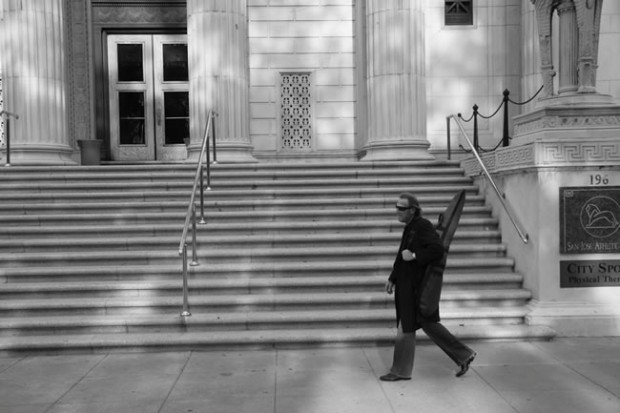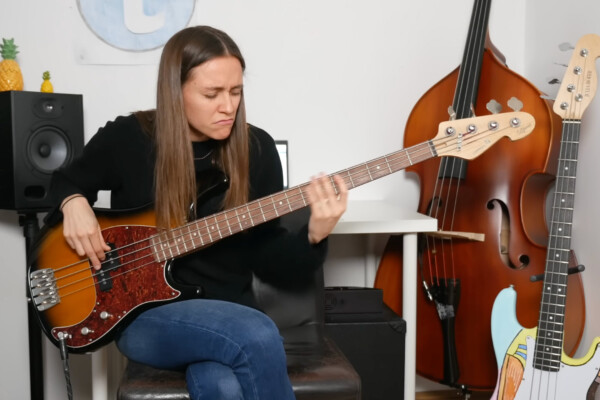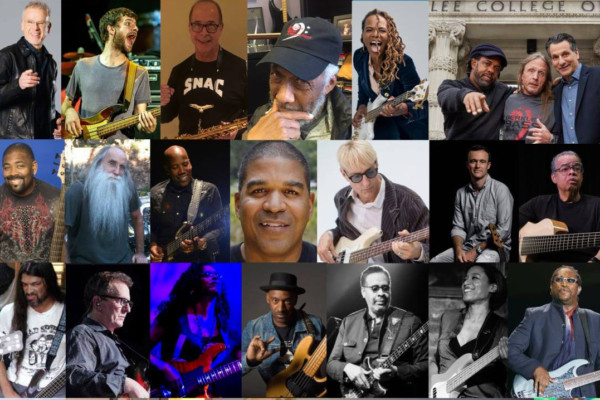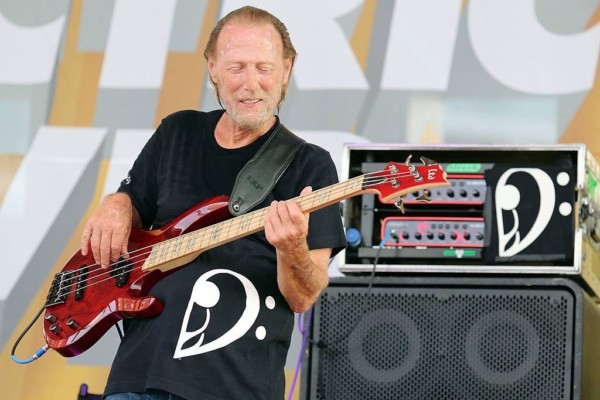Profiles in Tone: Francis “Rocco” Prestia

Rocco Prestia has been making the world dance since 1965 when he first joined Tower of Power. His infectious and distinctive 16th note groove became a foundation of fingerstyle funk bass playing that innumerable bassists have been trying to master for decades.
Prestia was born and raised in California, where he got into music at an early age. He joined Tower of Power as a guitarist but switched to bass after the band’s mentor Terry Saunders suggested he pick it up. Even before he had gotten his legendary style down, Prestia was focused on getting a good sound. “I think if you’re going to take [your playing] seriously, tone had better be important,” he says.
We took time during our recent interview with Prestia to talk tone and how he gets his.
On the Quintessential Bass Tone
It should sound like a bass [laughs]. That’s the simple answer. Tone has always been important to me. For me, the bass should be prominent but tucked in to be one of the driving forces in the band, no matter how many pieces you’ve got. I hear a lot of guys who are great players from every genre, but their tone is like, “What are you thinking?” That’s just me, though. I play a certain way and I want a certain sound. There is a certain sweetness in the bottom, and I’m always looking for that. I don’t use a lot of mids. I basically work with my treble and bass. I just try to find the biggest and roundest and punchiest tone that I can get.

On Basses
ESP is a great company, and they were open to suggestions when we were designing my signature bass. They let me contour the body so it was more to my liking, and it’s definitely my neck on there. It was a great process to make it. It has a P pickup with a J in the back, but the P pickup is reversed.
I usually roll it so the J pickup is definitely not overbearing. It’s just a taste of it. P pickups are much more bassy, and I just like that sound better. I play passive. I used to play active [basses], but I like the way that feels better playing passive. It’s more natural and I’m able to get more of the tone I’m looking for by being passive.
On Technique
 [For my right hand], I usually rest my thumb on that front pickup. [Tone is] more about the amp and the attack on your instrument, but the left hand serves its purpose, too. It allows me to control the length of the note at any given time. Since I play with a lot of 16ths, I play a lot of non-notes. It’s very percussive.
[For my right hand], I usually rest my thumb on that front pickup. [Tone is] more about the amp and the attack on your instrument, but the left hand serves its purpose, too. It allows me to control the length of the note at any given time. Since I play with a lot of 16ths, I play a lot of non-notes. It’s very percussive.
On Amps
I used to play with two Sunn cabinets with an [Ampeg] SVT top, and I loved that sound. I was playing a Fender back then too [in the early ’70s]. I used that rig for the first few years – probably ’70 to ’75 or ’76… maybe even up until ’77. I was out of [Tower of Power] from ’77 until they asked me to come back in ’84.
Now I have a TC Electronic Staccato ’51 head, which I love because I love the tuner feature [laughs]. It’s a great head. It does everything that I ask it to. Then I’ve got a TC 4×10 cabinet and a 4×12 cabinet as well.

Getting Your Tone
I would say start with the basics. Start with bass and treble and don’t worry about the mids unless they’re absolutely necessary. Find that sweet spot. First, just roll the bass all the way up. Whatever you’ve got on it, just turn it all the way up. Work with the amp and then roll things off as you test it. Just keep dialing in slowly.
It’s a lot easier of course if you have someone that knows you and works with you to [give you direction] so you can stand back and hear it. It’s a better process if you have two people instead of having one guy going back and forth.
Now, it depends on what you’re looking for. A lot of guys like that [mid-range heavy] sound. It depends on what you’re looking for, but that’s where I would start before you add all the toys and effects on it. Start slowly and start with the bass. Get to where you want it, then you can add all the other stuff if that’s what you’re looking for. For me personally, it loses its quality as a bass [when you add lots of effects].




Great article. For one of the next profiles in tone would you consider talking to an upright bassist or even someone who doubles (john pattatucci, christian mcbride etc)?
That sounds like a great idea, Sam. Thanks!
Would love to see on on Ben Alison. Great player and composer.
Such a great player! A great combination of simplicity and complexity- VERY difficult to imitate…
I wish you had asked him about the strings he has used throughout his career.
Long live Rocco!